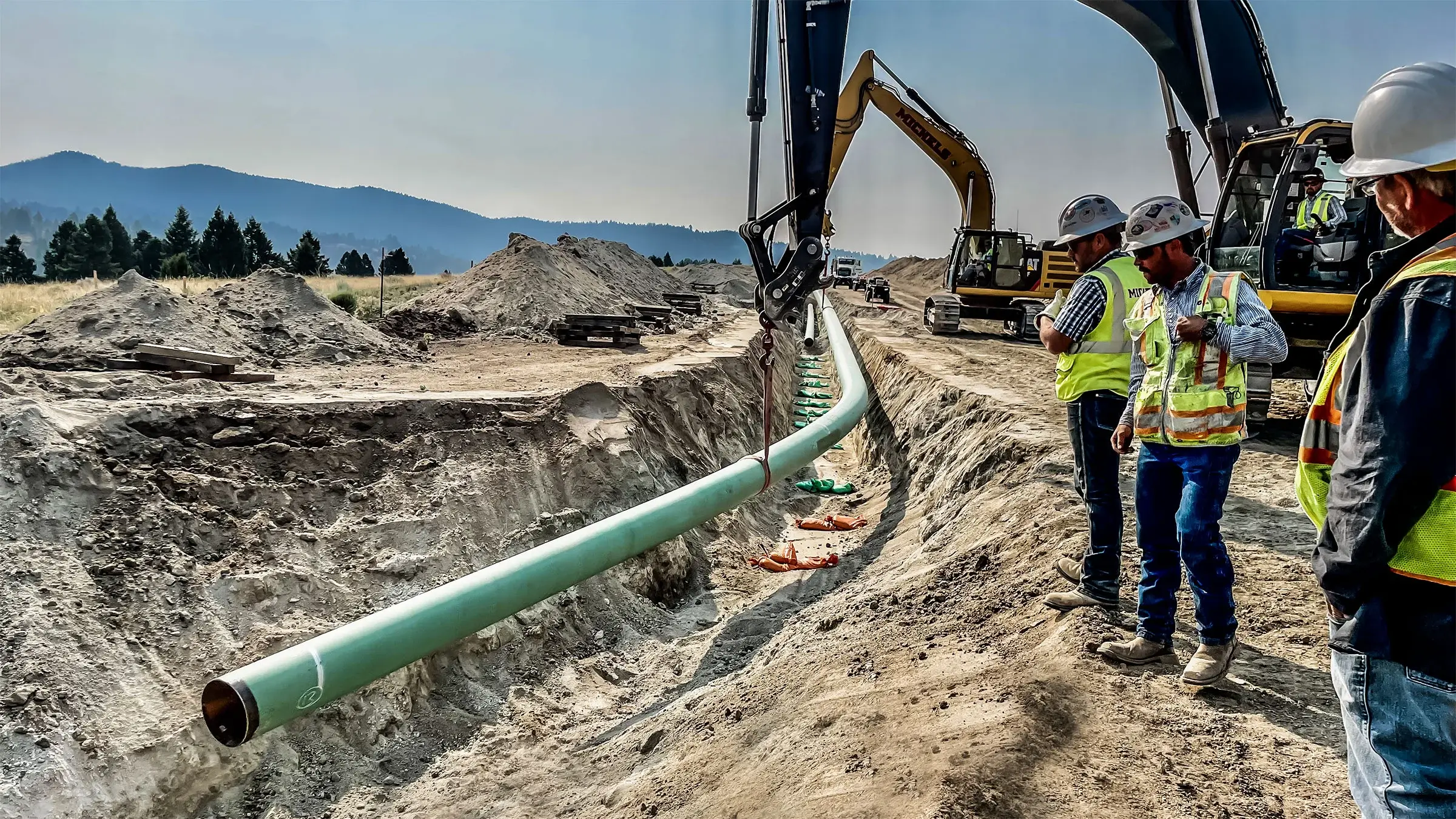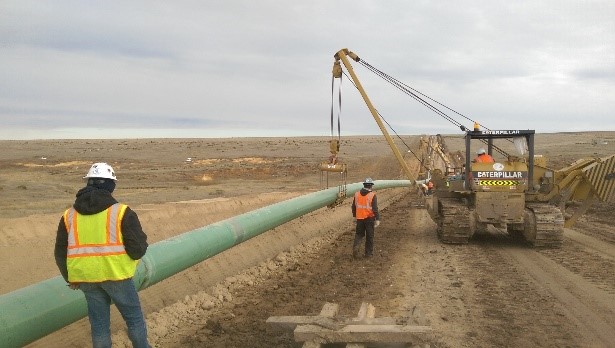How Creek Pipe Company Helps Cities Prepare for Water Scarcity
Wiki Article
Revealing the Most Current Innovations in Pipelines for Reliable Water Management
The advancement of pipe modern technology is reshaping water administration approaches. Current developments, especially in wise sensing unit technology and leakage discovery systems, promise improved effectiveness and sustainability. These improvements make it possible for real-time monitoring and anticipating maintenance, resolving important water difficulties. As neighborhoods endeavor for durability, the function of eco-friendly materials comes to be significantly significant - Creek Pipe Texas. What other developments are on the perspective that could even more change our technique to water source management?Developments in Smart Sensor Modern Technology
As water monitoring systems come to be increasingly intricate, innovations in smart sensor modern technology play a necessary function in enhancing performance and sustainability. These sensing units make it possible for real-time surveillance of water quality, flow prices, and pressure levels, offering important information for reliable administration. By incorporating Internet of Points (IoT) capacities, smart sensors facilitate remote access and information analytics, permitting operators to make informed choices swiftly.Moreover, anticipating maintenance becomes feasible via the usage of innovative formulas that evaluate sensor data to anticipate prospective failings before they happen. This positive approach minimizes downtime and reduces repair service costs. In addition, smart sensing units add to the preservation of water sources by discovering leakages and irregularities in the system, guaranteeing prompt action is required to mitigate waste. Generally, the implementation of smart sensor innovation in water monitoring pipes notes a significant step in the direction of optimizing resource use and promoting ecological sustainability.Eco-Friendly Materials for Lasting Pipes
Cutting-edge strategies in water management pipelines progressively integrate environmentally friendly products to improve sustainability. These products goal to lessen environmental influence while keeping toughness and performance. Eco-friendly plastics, for example, are acquiring traction as feasible choices to conventional PVC, decreasing long-lasting waste in garbage dumps. In addition, recycled materials, such as redeemed rubber and steel composites, are being used to create robust pipeline systems that significantly lower carbon footprints.Moreover, bio-based materials derived from renewable energies are arising as appealing options, using both strength and minimized dependence on fossil gas. Producers are additionally exploring ingenious finishings that enhance rust resistance while staying ecologically benign. These developments not only advertise a circular economic climate however additionally straighten with international sustainability goals. As water shortage becomes a pressing issue, the fostering of environmentally friendly materials in pipe building and construction stands for a pivotal step in the direction of liable water monitoring and resource conservation.
Real-Time Monitoring and Information Analytics
While typical water administration systems often rely upon routine evaluations, the integration of real-time surveillance and information analytics has transformed the landscape of pipe administration. This innovative technique allows operators to constantly track water quality, circulation, and pressure, assisting in immediate actions to potential problems - Creek Pipe Pipeline Construction. By leveraging innovative sensing units and IoT technology, information is accumulated and analyzed immediately, supplying workable insights that improve decision-making processes.Real-time analytics not only improves operational effectiveness however also helps in resource allotment, making certain that water circulation is maximized. Anticipating analytics can forecast need patterns, allowing for positive actions to be implemented, thus lowering waste and improving sustainability initiatives. Moreover, the ability to envision information through dashboards help in identifying patterns and anomalies, which is crucial for keeping the stability of water supply systems. This shift in the direction of real-time monitoring represents a significant innovation in guaranteeing the efficiency and sustainability of water management pipes.Innovations in Leak Detection Solutions
The rise of real-time surveillance has actually led the means for developments in leakage discovery systems within water monitoring pipelines. Modern innovations, including acoustic sensors and fiber optic cables, enable drivers to identify leaks with extraordinary accuracy. Acoustic sensing units, for instance, find acoustic waves created by running away water, permitting for immediate area pinpointing. In comparison, fiber optic systems make use of temperature modifications along the pipeline to disclose anomalies a measure of leaks.Additionally, artificial intelligence algorithms are being utilized to assess information accumulated from these sensors, enhancing anticipating maintenance capacities. By refining historic information and identifying patterns, these systems can forecast prospective leakage areas prior to they occur, minimizing water loss and lowering repair costs.Furthermore, assimilation with geographical information systems (GIS) enables for much better visualization and management of pipe networks, improving the feedback to detected leakages. Jointly, these advancements symbolize a transformative change in how water monitoring systems deal with leakage discovery.Enhanced Resilience and Longevity of Pipeline Products
Improvements in pipeline materials are considerably boosting the longevity and longevity of water administration systems. Innovative materials, such as high-density polyethylene (HDPE) and strengthened concrete, are confirming to be more immune to deterioration, pressure, and ecological stressors. These modern products not only expand the lifespan of pipelines but likewise decrease maintenance prices and the regularity of repairs.Additionally, innovations in composite materials, which integrate various compounds to enhance efficiency, are being used for their superior strength-to-weight proportion and flexibility. This allows pipes to much better endure severe climate condition and ground movements.Moreover, the intro of protective finishes further boosts the strength of pipes against chemical degradation and physical wear. Because of this, water management systems are coming to be a lot more trustworthy and lasting, making certain the effective shipment of water resources while decreasing the environmental impact related to constant pipe replacements.Integration of IoT in Water Circulation Networks
As water distribution networks develop, the combination of the Internet of Points (IoT) is changing the method water resources are taken care of and monitored. Smart sensors and connected devices make it possible for real-time data collection on water circulation, stress, and high quality, promoting proactive monitoring of infrastructure. This advancement enables instant discovery of irregularities and leakages, decreasing water loss and minimizing operational costs.Furthermore, IoT technology sustains predictive upkeep by assessing use patterns, which assists energies plan repair services and upgrades more properly. Enhanced communication between devices warranties seamless information transmission, enabling improved decision-making based on precise, current information.Additionally, the integration of IoT promotes water conservation initiatives by giving customers with understandings right into their consumption routines, encouraging even more accountable usage. In general, the IoT changes water circulation networks, promoting effectiveness and sustainability in water administration techniques.Situation Studies: Success Stories in Water Administration Solutions
Countless communities and companies have actually effectively executed innovative water management services, showcasing the effectiveness of modern-day technologies in resolving water scarcity and circulation challenges. One significant instance is the city of San Diego, which incorporated sophisticated metering framework (AMI) to monitor water usage in real-time, causing a 10% reduction in intake. Creek Pipe Pipeline Construction. Similarly, the water authority in Cape Community adopted a wise leakage detection system that identified and fixed leaks quickly, substantially lessening water loss during the serious dry spell of 2017. In Australia, the usage of recycled water supply in urban areas has verified successful, permitting lasting watering techniques and minimized need on potable water resources. These study illustrate that by leveraging innovation and cutting-edge techniques, communities can enhance their water management techniques, ensuring lasting sustainability and resilience despite growing water obstaclesOften Asked Concerns
How Do These Technologies Influence Water Utility Costs?
The technologies in pipe technology greatly minimize water loss and functional ineffectiveness. Consequently, water energies experience decreased upkeep and manufacturing prices, eventually resulting in lower expenses for consumers and enhanced sustainability in water administration methods.What Are the Ecological Influences of Pipeline Installation?
The ecological impacts of pipe installation can include environment disruption, dirt erosion, and potential water contamination. Contemporary techniques aim to mitigate these impacts, advertising lasting methods in building and lasting eco-friendly preservation.
Exist Federal Government Rules Affecting Pipe Innovations?

Federal government policies considerably affect pipe innovations, mandating compliance with ecological standards and security protocols. These policies aim to mitigate environmental threats while promoting advancements in innovation, eventually shaping the future of pipe facilities Creek Pipe Company and water administration techniques.

How Can Consumers Advantage From These Pipeline Advancements?
Customers can gain from these pipe improvements with enhanced water quality, decreased prices, boosted dependability, and raised accessibility to tidy water. Developments bring about more effective source management, eventually fostering sustainable practices within areas.What Future Fads Can We Anticipate in Water Administration Pipelines?
Future trends in water management pipelines may include boosted automation, smart surveillance technologies, and lasting materials. These developments intend to boost effectiveness, lower leaks, and boost general water high quality, ensuring resource conservation for future generations. As water circulation networks progress, the combination of the Net of Points (IoT) is changing the means water resources are handled and kept an eye on. Various districts and organizations have actually successfully implemented ingenious water monitoring services, showcasing the performance of modern technologies in dealing with water shortage and circulation challenges. The water authority in Cape Town embraced a wise leakage discovery system that determined and repaired leakages swiftly, considerably reducing water loss during the extreme dry spell of 2017. In Australia, the use of recycled water systems in metropolitan locations has confirmed successful, permitting for sustainable watering practices and reduced demand on safe and clean water sources. Customers can profit from these pipeline improvements with enhanced water high quality, decreased prices, boosted integrity, and boosted access to tidy water.Report this wiki page